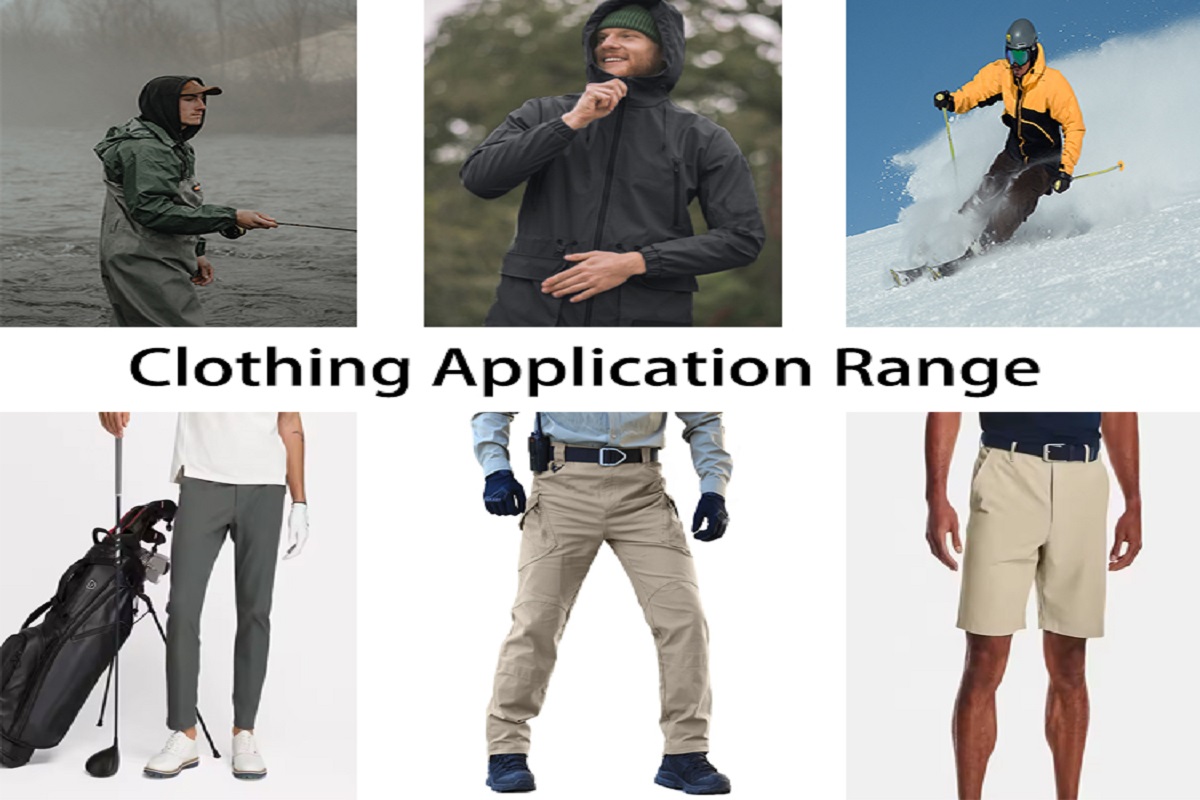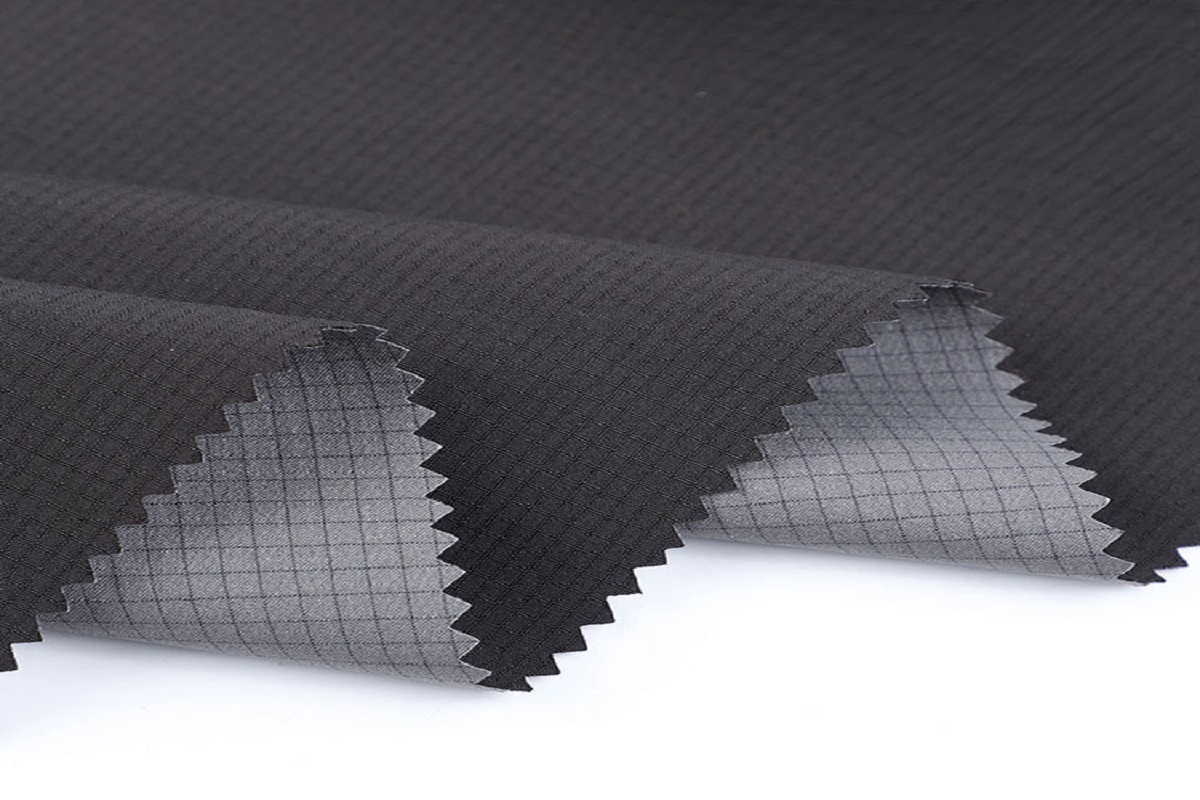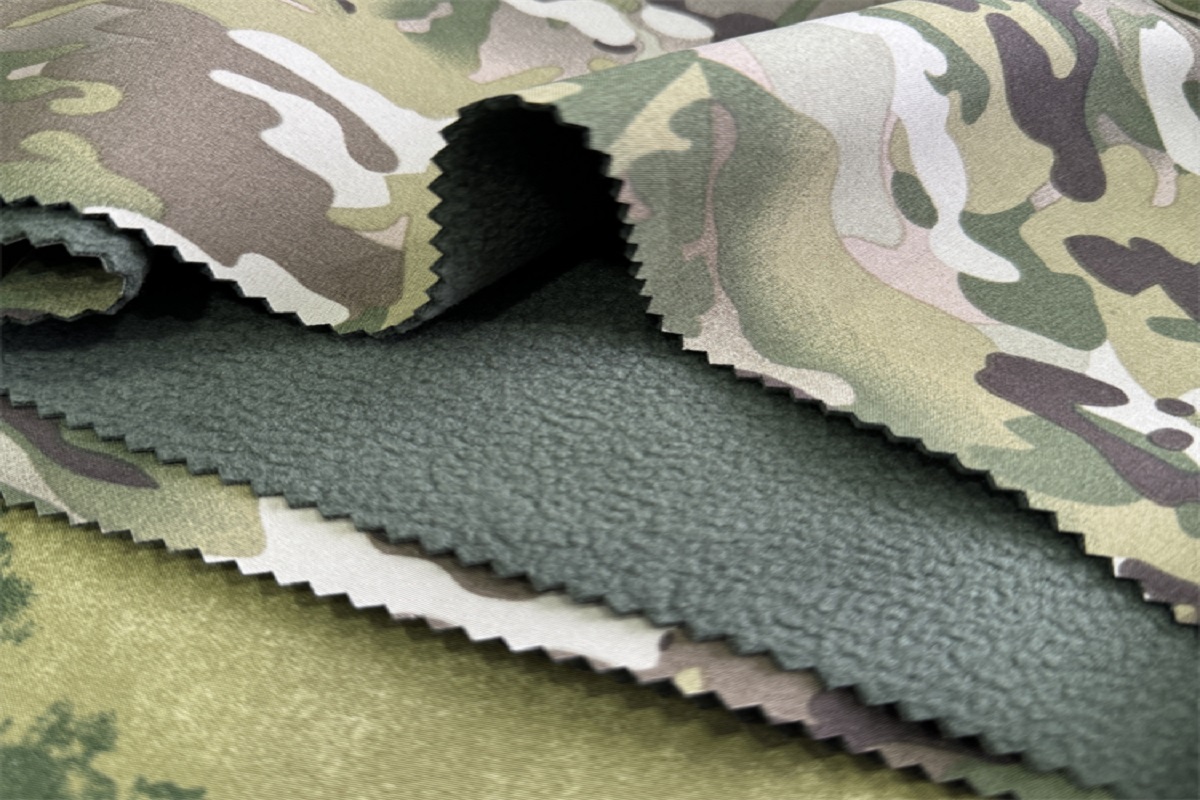 Outdoor adventures require gear that excels in tough conditions. Wind-resistant fabric is essential for protecting you from strong winds while maintaining comfort. Lightweight options help reduce bulk, making them perfect for extended hikes or climbs. Quiet materials improve your experience by reducing noise, particularly during wildlife observation. Durability ensures your gear can handle rough terrains and frequent use. Whether you’re in search of a reliable windproof jacket fabric or considering the advantages of 3 layer windproof fabric, selecting the right material can greatly enhance your outdoor journey.
Outdoor adventures require gear that excels in tough conditions. Wind-resistant fabric is essential for protecting you from strong winds while maintaining comfort. Lightweight options help reduce bulk, making them perfect for extended hikes or climbs. Quiet materials improve your experience by reducing noise, particularly during wildlife observation. Durability ensures your gear can handle rough terrains and frequent use. Whether you’re in search of a reliable windproof jacket fabric or considering the advantages of 3 layer windproof fabric, selecting the right material can greatly enhance your outdoor journey.Key Takeaways
- Choose lightweight and packable fabrics like Pertex Quantum for hiking to reduce strain and enhance mobility.
- Opt for quiet materials such as Polartec Wind Pro when engaging in wildlife observation or hunting to minimize noise and disturbance.
- Prioritize breathability in your fabric selection to stay comfortable during intense activities, preventing overheating.
- Invest in durable options like Schoeller Dynamic for rugged terrains, ensuring your gear withstands wear and tear over time.
- Evaluate your specific outdoor activities and weather conditions to select the most suitable fabric, balancing features like weight, durability, and quietness.
- Understand the trade-offs between different fabric qualities to make informed decisions that align with your adventure goals.
- Regularly maintain your wind-resistant fabrics by following care instructions to extend their lifespan and performance.
What to Look for in Wind-Resistant Fabrics
When choosing wind-resistant fabric for outdoor gear, understanding the key features can make all the difference. Each characteristic plays a role in ensuring comfort, performance, and durability during your adventures.
Key Features to Consider
Weight and Packability
Lightweight fabrics reduce the strain on your body during long hikes or climbs. They also pack down easily, saving space in your backpack. A fabric that balances strength with minimal weight ensures you stay agile without compromising protection.
Noise Level and Quietness
Quiet fabrics enhance your outdoor experience, especially during activities like wildlife observation or hunting. Materials that produce minimal rustling allow you to move discreetly and enjoy the natural sounds around you.
Breathability and Comfort
Breathable fabrics prevent overheating by allowing moisture to escape. This feature keeps you dry and comfortable, even during intense physical activities. A fabric that combines wind resistance with breathability ensures you stay protected without feeling stifled.
Durability and Longevity
Durable fabrics withstand rough terrains and frequent use. They resist wear and tear, ensuring your gear lasts through multiple adventures. Investing in a long-lasting material saves money and reduces waste over time.
Why These Features Matter for Outdoor Gear
Impact on Performance in Different Activities
Each activity demands specific fabric qualities. For hiking, lightweight and breathable materials improve endurance. Hunting requires quiet fabrics to avoid startling wildlife. Camping benefits from durable options that handle varied conditions. Choosing the right fabric enhances your performance and enjoyment.
Balancing Trade-offs Between Features
No fabric excels in every category. Lightweight options may lack durability, while quiet materials might sacrifice breathability. Understanding your priorities helps you make informed decisions. For example, prioritize durability for rugged terrains or quietness for stealthy activities. Striking the right balance ensures your gear meets your needs.
Top Wind-Resistant Fabrics for Outdoor Gear
 Gore-Tex Infinium
Gore-Tex Infinium
Gore-Tex Infinium stands out as a premium wind resistant fabric. It offers exceptional windproofing, ensuring you stay protected in harsh conditions. Its breathability enhances comfort during high-energy activities. The weather-resistant properties make it a versatile choice for unpredictable outdoor environments. I have found it particularly effective for hiking in windy mountain regions where sudden weather changes occur.
However, this fabric comes with a higher price tag. It also tends to be less quiet compared to other options, which might not suit activities requiring stealth, like wildlife observation. Despite these drawbacks, its performance in extreme conditions justifies the investment for many outdoor enthusiasts.
Pros: Windproof, breathable, and weather-resistant.
Cons: Higher cost and less quiet than some alternatives.
Windstopper
Windstopper fabric delivers a balance of lightweight design and wind resistance. It excels in providing quietness, making it ideal for hunting or birdwatching. Its ability to block strong winds while remaining lightweight ensures you can move freely without added bulk. I often recommend this fabric for those who prioritize silence and mobility in their outdoor gear.
On the downside, Windstopper lacks the waterproofing capabilities of Gore-Tex. While it handles light moisture well, it may not perform as effectively in heavy rain. For dry and windy conditions, though, it remains a top contender.
Pros: Lightweight, quiet, and highly wind-resistant.
Cons: Limited waterproofing compared to Gore-Tex.
Pertex Quantum
Pertex Quantum is an ultra-lightweight wind resistant fabric that prioritizes packability. It compresses easily, making it a favorite for backpackers and climbers who need to save space. Its windproof nature ensures reliable protection during gusty conditions. I appreciate how this fabric combines minimal weight with effective performance, especially for long treks.
However, its lightweight design comes at the cost of durability. It may not withstand rugged use or abrasive surfaces as well as heavier fabrics. For those seeking a compact and efficient option for less demanding environments, Pertex Quantum remains a solid choice.
Pros: Ultra-lightweight, packable, and windproof.
Cons: Less durable for rugged use.
Schoeller Dynamic
Schoeller Dynamic fabric stands out for its exceptional durability and versatility. I have relied on this fabric during demanding outdoor activities where gear faces constant wear and tear. Its robust construction resists abrasions, making it a reliable choice for rugged terrains. The water-resistant properties add an extra layer of protection, keeping you dry in light rain or damp conditions. Its windproof nature ensures that strong gusts don’t compromise your comfort or performance.
Breathability is another key advantage of Schoeller Dynamic. It allows moisture to escape, preventing overheating during intense physical activities. I find this particularly useful when hiking steep trails or climbing in windy environments. However, the premium quality comes with a higher price point. For those who prioritize long-lasting performance and versatility, the investment often proves worthwhile.
Pros: Durable, water-resistant, windproof, and breathable.
Cons: Higher price point.
Polartec Wind Pro
Polartec Wind Pro fabric offers a unique combination of quietness and wind resistance. I often recommend it for activities like wildlife observation or hunting, where minimal noise is crucial. The tightly woven structure effectively blocks wind while maintaining breathability. This balance ensures comfort during extended outdoor use.
The fabric’s quiet nature enhances the overall experience, especially in serene environments. I appreciate how it allows me to move without disturbing the natural surroundings. However, Polartec Wind Pro tends to be heavier than other wind resistant fabric options. While this may not suit ultralight backpackers, it remains an excellent choice for those seeking quiet and reliable wind protection.
Pros: Quiet, breathable, and wind-resistant.
Cons: Heavier than other options.
Nylon Ripstop
Nylon Ripstop fabric combines lightweight design with impressive durability. I often choose this fabric for projects requiring a balance of strength and portability. Its grid-like pattern prevents tears from spreading, ensuring the material holds up well under stress. The wind-resistant properties make it a dependable option for jackets and other outdoor gear.
Despite its advantages, Nylon Ripstop can produce noise when rubbed against itself or other materials. This characteristic may not suit activities requiring stealth. Additionally, it offers limited breathability compared to other fabrics. For general outdoor use, though, its lightweight and durable nature make it a practical choice.
Pros: Lightweight, durable, and wind-resistant.
Cons: Can be noisy and less breathable.
Ventile
Ventile fabric offers a unique combination of natural comfort and windproof performance. Made from tightly woven cotton, it provides excellent protection against strong winds while maintaining a soft and breathable feel. I often recommend Ventile for outdoor enthusiasts who value quietness in their gear. Its silent nature makes it ideal for activities like birdwatching or wildlife observation, where minimal noise is essential.
The fabric’s natural composition enhances comfort during extended use. I’ve found it particularly effective in moderate weather conditions, where its windproof qualities shine. However, Ventile is not waterproof, which limits its usability in wet environments. Additionally, it tends to be heavier than synthetic alternatives, making it less suitable for ultralight backpacking. Despite these drawbacks, its durability and quietness make it a reliable choice for specific outdoor needs.
Pros: Quiet, windproof, and comfortable.
Cons: Not waterproof and heavier than synthetic options.
Nikwax Wind Resistor
Nikwax Wind Resistor stands out as a lightweight and versatile wind resistant fabric. Its closely woven polyester microfibre construction provides excellent windproofing, reducing the effects of windchill during outdoor activities. I appreciate its 4-way stretch, which enhances mobility and comfort, especially during dynamic movements like climbing or hiking. This fabric adapts well to various conditions, offering reliable performance without adding unnecessary weight.
While Nikwax Wind Resistor excels in flexibility and wind resistance, it has some limitations. Its availability can be restricted, making it harder to source for certain projects. Additionally, it may not hold up as well in extreme or rugged conditions compared to more durable options. For those seeking a lightweight and functional fabric for moderate outdoor use, it remains a practical and efficient choice.
Pros: Lightweight, windproof, and offers 4-way stretch.
Cons: Limited availability and less durable for extreme conditions.
Fleece
Fleece fabric provides a soft and lightweight option for outdoor gear. Its quiet nature makes it a favorite for activities requiring minimal noise, such as wildlife observation or casual camping. I often choose fleece for its comfort and versatility. It works well as a mid-layer, offering warmth and wind resistance in cooler climates. The fabric’s breathability ensures that moisture doesn’t build up during physical activities, keeping you dry and comfortable.
However, fleece has its limitations. It is not fully windproof, which means it may not provide adequate protection in extremely windy conditions. Additionally, it lacks the durability of other fabrics, making it less suitable for rugged use. Despite these shortcomings, fleece remains a popular choice for lightweight and quiet outdoor applications.
Pros: Soft, lightweight, and quiet.
Cons: Not fully windproof and less durable.
How to Choose the Right Fabric for Your Needs
 Selecting the right wind resistant fabric for outdoor gear requires careful consideration of your specific needs. I always recommend evaluating your activities, weather conditions, and priorities to make an informed decision. Each factor plays a critical role in ensuring your gear performs effectively in the field.
Selecting the right wind resistant fabric for outdoor gear requires careful consideration of your specific needs. I always recommend evaluating your activities, weather conditions, and priorities to make an informed decision. Each factor plays a critical role in ensuring your gear performs effectively in the field.
Consider Your Activity
Hiking and Backpacking
For hiking and backpacking, lightweight and packable fabrics work best. I prefer materials like Pertex Quantum or Nylon Ripstop because they reduce the load on my back while offering reliable wind resistance. Durability also matters, especially when navigating rugged trails. A fabric that balances strength and weight ensures you stay comfortable without compromising performance.
Hunting and Wildlife Observation
Quietness becomes essential for hunting or wildlife observation. I often choose fabrics like Polartec Wind Pro or Ventile for these activities. Their minimal noise allows me to move discreetly, avoiding disturbances to the environment. Breathability also helps during long hours of waiting, keeping me comfortable in varying conditions.
Camping and General Outdoor Use
For camping or general outdoor use, versatility takes priority. I rely on durable options like Schoeller Dynamic or Gore-Tex Infinium. These fabrics handle diverse conditions, from windy nights to light rain. They provide a balance of comfort and protection, making them ideal for extended stays outdoors.
Evaluate Weather Conditions
Windy and Dry Climates
In dry and windy climates, breathability and windproofing become key. I recommend fabrics like Windstopper or Nikwax Wind Resistor. These materials block strong gusts while allowing moisture to escape, preventing overheating. Their lightweight nature also makes them suitable for warm, arid environments.
Wet and Windy Environments
For wet and windy conditions, water-resistant fabrics like Gore-Tex Infinium or Schoeller Dynamic perform exceptionally well. I’ve found these materials effective in keeping me dry while shielding against strong winds. Their ability to handle unpredictable weather ensures I stay protected during challenging outdoor adventures.
Balance Priorities
Lightweight vs. Durability
Balancing lightweight design with durability often depends on the activity. For long treks, I prioritize lightweight fabrics like Pertex Quantum to reduce fatigue. However, for rugged terrains, I lean toward durable options like Schoeller Dynamic. Understanding the trade-offs helps me choose the right fabric for each situation.
Quietness vs. Performance
Quietness may come at the cost of other features like waterproofing or durability. For stealthy activities, I opt for fabrics like Ventile or Polartec Wind Pro. When performance takes precedence, I turn to Gore-Tex Infinium or Windstopper. Identifying what matters most ensures my gear aligns with my goals.
By considering these factors, I can confidently select the best wind resistant fabric for my outdoor needs. The right choice enhances comfort, protection, and overall experience, no matter the adventure.
Choosing the right wind resistant fabric can transform your outdoor experience. I recommend focusing on key features like weight, durability, breathability, and quietness. Each fabric offers unique strengths. Gore-Tex Infinium excels in extreme conditions, while Polartec Wind Pro provides quiet comfort. Schoeller Dynamic stands out for durability, and Pertex Quantum shines in lightweight packability. Assess your specific needs and activities to find the best match. Whether you prioritize stealth, ruggedness, or portability, the right fabric ensures comfort and performance in any adventure.
FAQ
Why choose windproof fabric for jackets?
Windproof fabric provides essential protection against harsh winds. It helps maintain body warmth by blocking cold air from penetrating the jacket. I find it especially useful during outdoor activities in windy environments. This type of fabric enhances comfort and ensures better performance in challenging conditions.
What is the difference between windproof and wind-resistant fabrics?
Windproof fabrics completely block wind, offering maximum protection. Wind-resistant fabrics reduce wind penetration but allow some airflow. I prefer windproof materials for extreme conditions, while wind-resistant options work well for moderate climates where breathability matters more.
Are windproof fabrics breathable?
Many windproof fabrics, like Gore-Tex Infinium and Schoeller Dynamic, combine windproofing with breathability. These materials allow moisture to escape, preventing overheating. I recommend checking the specific fabric features to ensure it meets your needs for both protection and comfort.
Which wind-resistant fabric is best for lightweight gear?
For lightweight gear, I often choose Pertex Quantum or Nylon Ripstop. These fabrics offer excellent wind resistance without adding bulk. They pack down easily, making them ideal for backpacking or climbing trips where space and weight are critical.
Can wind-resistant fabrics handle wet conditions?
Some wind-resistant fabrics, like Gore-Tex Infinium and Schoeller Dynamic, include water-resistant properties. They provide protection in light rain or damp conditions. However, I avoid using fabrics like Ventile or fleece in wet environments since they lack waterproofing.
How do I maintain wind-resistant fabrics?
Proper care extends the life of wind-resistant fabrics. I recommend washing them with mild detergents and avoiding fabric softeners, which can damage their protective properties. Always follow the manufacturer’s care instructions to preserve performance.
Are quiet fabrics less durable?
Quiet fabrics, such as Polartec Wind Pro and Ventile, often prioritize minimal noise over rugged durability. While they perform well in specific activities like wildlife observation, I avoid using them in rough terrains where durability is crucial.
What is the most durable wind-resistant fabric?
Schoeller Dynamic stands out for its durability. Its robust construction resists abrasions and wear, making it suitable for rugged outdoor activities. I rely on this fabric when I need gear that can handle tough conditions.
Can I use fleece as a wind-resistant layer?
Fleece offers some wind resistance but is not fully windproof. I use it as a mid-layer for added warmth and comfort. For strong winds, I pair fleece with an outer layer made from windproof fabric for better protection.
How do I choose the right fabric for my activity?
Consider the demands of your activity. For hiking, I prioritize lightweight and breathable fabrics like Pertex Quantum. For hunting, I choose quiet options like Polartec Wind Pro. Matching the fabric’s features to your activity ensures optimal performance and comfort.
Post time: Jan-20-2025
